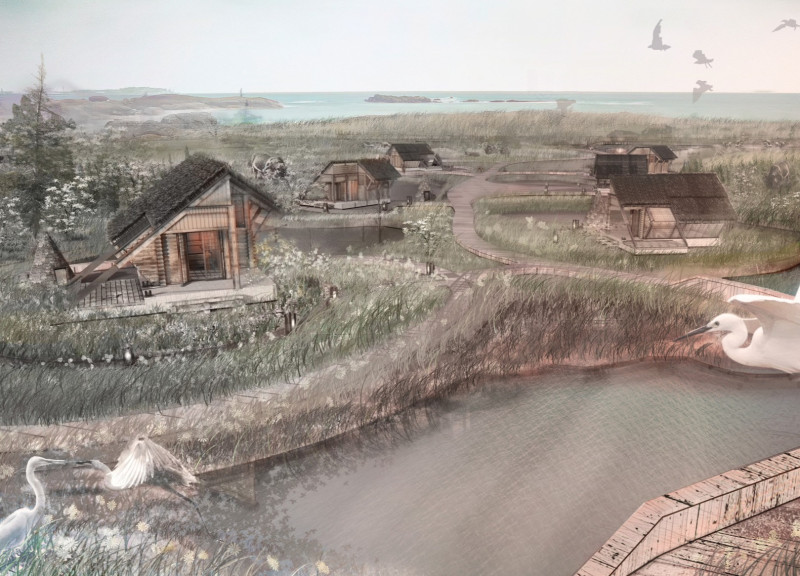5 key facts about this project
The project "Baltā Cielava," located in Skrunda, Latvia along the bank of the Venta River, is an architectural design that integrates traditional Latvian elements with modern accommodation functions. Designed as a retreat for eco-tourism, the cabins feature a decentralized layout that enhances interaction with the surrounding natural landscape. Each cabin, with its sloped roof and wooden construction, contributes to a cohesive visual identity that resonates with local vernacular architecture. The development prioritizes sustainability by utilizing local materials and integrating energy-efficient design principles.
Sustainable Materials and Design Approach
A defining characteristic of "Baltā Cielava" is its meticulous choice of materials. The project employs locally sourced timber, which is fundamental to the cabin constructions and promotes natural insulation. Double-glazed glass windows maximize natural light while ensuring thermal performance. The use of natural stone enhances durability, serving as a foundation and pathway material that connects the structures with their environment. Thatching techniques reflect historical practices and offer unique roof textures, establishing a visual and cultural link to the region’s heritage.
The design elements are carefully orchestrated to foster biophilic connections, facilitating a dialogue between the built environment and the surrounding natural features. Expansive windows and semi-outdoor spaces encourage a seamless interaction with the external landscape, thus prioritizing occupant well-being. The inclusion of community spaces, such as barbecue areas and saunas, fosters social interactions among guests, enhancing the overall guest experience without compromising privacy.
Innovative Spatial Organization
The spatial organization of "Baltā Cielava" exhibits fluidity, with cabins arranged to follow the contours of the riverbank. This approach not only maximizes views of the water but also integrates diverse communal environments, promoting a sense of belonging. The design caters to adaptability, allowing spaces to serve multiple functions throughout the year. The project aligns with contemporary needs while respecting traditional Latvian architectural forms, creating a distinctive identity that stands out among conventional tourism accommodations.
For those interested in an in-depth exploration of the "Baltā Cielava" project, including architectural plans, sections, designs, and ideas, further details are available for review.


























